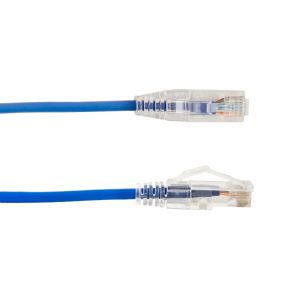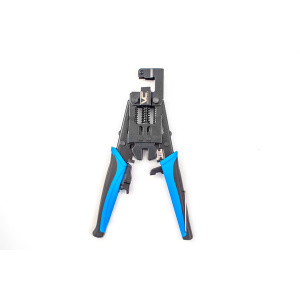The Genesis of the 1/8″ (3.5mm) Audio Cable
Long before the time of Bluetooth and wireless connectivity, wired connections reigned supreme. At the heart of these connections lay the humble 1/8″ (3.5mm) audio cable. It’s worth noting that these cables haven’t merely stumbled into existence, they’re the product of decades of technological evolution.
The Structure of a Typical 1/8″ (3.5mm) Audio Cable
The anatomy of an audio cable might seem complex at first glance, but it’s simpler than it appears. A typical 1/8″ (3.5mm) audio cable has three main parts: the connector, the cable, and the jacket. Let’s dive a little deeper.
Types of 1/8″ (3.5mm) Audio Cables
There’s more to 1/8″ (3.5mm) audio cables than meets the eye. The various types, such as mono, stereo, TRS, and TRRS, cater to different audio needs. This section will delve into the different types of 1/8″ (3.5mm) audio cables, highlighting their uses and advantages.
Understanding Cable Jacket Materials
The jacket is the protective casing of the cable. Its material can impact cable flexibility, durability, and even signal quality. From PVC to Teflon, each material has unique properties that can influence the audio cable’s performance.
Conductors and Shielding in Audio Cables
The quality of conductors and shielding plays a critical role in determining the overall performance of audio cables. Understanding these factors can help you make a more informed decision when purchasing a 1/8″ (3.5mm) audio cable.
1/8″ (3.5mm) Audio Cables and Sound Quality
Ever wondered why your headphones sound different when connected to various devices? The 1/8″ (3.5mm) audio cable could be the unsung hero (or villain). We will explain how these cables can significantly impact your audio experience.
When to Use 1/8″ (3.5mm) Audio Cables
While wireless technology has gained popularity, wired connections still have their place. There are situations where a 1/8″ (3.5mm) audio cable is the most reliable choice.
The Role of 1/8″ (3.5mm) Audio Cables in Various Devices
From smartphones to professional audio equipment, 1/8″ (3.5mm) audio cables have a wide range of applications. This section provides a deep dive into the devices that rely on these cables and how they benefit from them.
Guide to Buying a 1/8″ (3.5mm) Audio Cable
With a myriad of options in the market, picking the right audio cable can be tricky. Our buying guide will assist you in navigating the sea of audio cables, ensuring you get the best bang for your buck.
Pros and Cons of 1/8″ (3.5mm) Audio Cables
Like anything else, 1/8″ (3.5mm) audio cables have their advantages and drawbacks. Let’s weigh the pros and cons to help you make an informed decision.
The Future of 1/8″ (3.5mm) Audio Cables
As technology continues to evolve, so does the future of 1/8″ (3.5mm) audio cables. Here we will discuss the developments we can expect in this sector.
Cleaning and Maintenance of 1/8″ (3.5mm) Audio Cables
Proper maintenance can significantly extend the life of your audio cables. Learn about the best practices for cleaning and maintaining your 1/8″ (3.5mm) audio cables.
Troubleshooting Common 1/8″ (3.5mm) Audio Cable Issues
Encountered a problem with your audio cable? Don’t fret! This section will guide you on troubleshooting common issues and provide tips for quick fixes.
Essential Guide to 1/8″ (3.5mm) Audio Cables
This comprehensive guide to 1/8″ (3.5mm) audio cables provides valuable insights into the world of audio connectivity. A handy resource for both beginners and audio enthusiasts.
FAQ’s
What is a 1/8″ (3.5mm) audio cable used for?
A 1/8″ (3.5mm) audio cable is primarily used to transmit analog audio signals.
Why is the 1/8″ (3.5mm) audio cable also referred to as a mini jack?
The 1/8″ (3.5mm) audio cable is often called a mini jack because it’s a smaller version of the original 1/4″ (6.35mm) audio cable, also known as the phone jack.
Are all 1/8″ (3.5mm) audio cables the same?
No, there are several types of 1/8″ (3.5mm) audio cables, such as mono, stereo, TRS, and TRRS. Each type is designed for a specific application.
Can the quality of a 1/8″ (3.5mm) audio cable affect sound quality?
Absolutely. Factors like the cable’s construction, conductors, and shielding can significantly impact sound quality.
How often should I replace my 1/8″ (3.5mm) audio cables?
The lifespan of a cable largely depends on its quality and how well it’s maintained. However, if you notice a degradation in sound quality, it might be time for a replacement.
Can I use a 1/8″ (3.5mm) audio cable with my iPhone?
Most iPhones no longer have a 1/8″ (3.5mm) jack. However, you can use an adapter to connect a 1/8″ (3.5mm) audio cable.
Conclusion
The 1/8″ (3.5mm) audio cable, an unassuming piece of technology, plays a critical role in our audio experience. Understanding its various aspects, from construction to application, will help you make the most out of your audio devices. Remember, when it comes to audio, every little detail counts.












